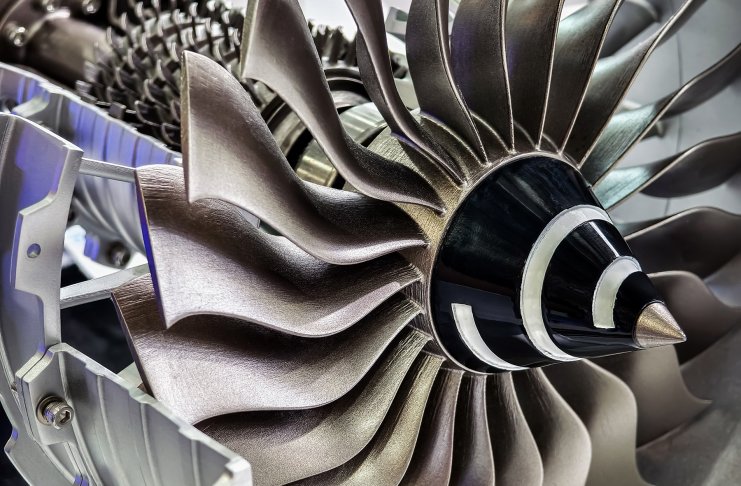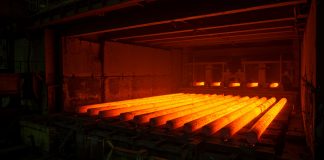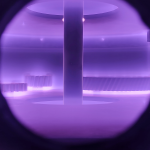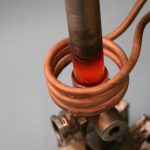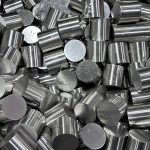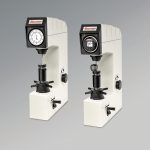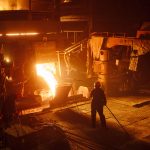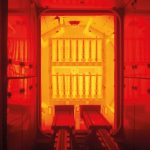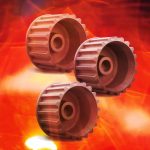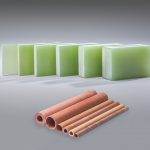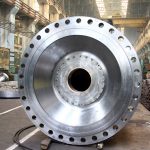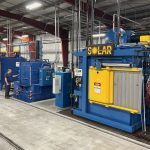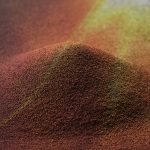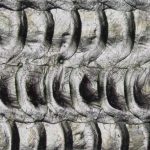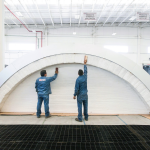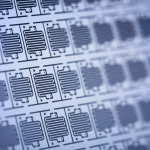The effect of heat treatment and cold forging on the mechanical properties of...
This study developed a new heat treatment method, normalizing and stress relief (NSR), to increase productivity compared to spheroidizing annealing (SA). The influence of...
The Influence of induction hardening, nitriding, and boronizing on certain steels
Heat-treatment technology changes all the mechanical properties of metallic materials. The influence of induction hardening, nitriding, and boronizing on the change in the microhardness,...
Transverse Internal Cracking of Induction Hardened Shafts
Induction hardening lends itself very well to heat treating steel shafts that will be loaded in torsion and/or bending. In both cases, it puts...
Polymer Quenchants for Steel Heat Treatment
In the early history of the heat treatment of steel, water and brine were used to quench lean alloys that consisted of little more...
Post heat treatment optimization of cold spray AM Inconel 718
The cold spray technique has recently emerged as an additive manufacturing method for producing free-standing parts in addition to its use in repair and...
The rise of Ag sintering and Cu sintering
With the trend from Si IGBT to SiC MOSFET in electric vehicle (EV) power electronics, the junction temperature is expected to increase from 150°C...
Induction heating in the medical device manufacturing industry
Induction heating is a process that uses electromagnetic fields to heat electrically conductive materials. An induction heating system includes a power supply that converts...
Heat transfer molten salt mixtures for austempering and martempering processes of steels
Molten salts are highly effective as a quenching medium for austempering and martempering processes, enabling precise control of cooling rates to achieve the desired...
Process gas: Understanding partial pressure and convection heat treating
Designed to pump out atmospheric gases at the beginning of a heat-treating process, while also being capable of introducing process gases to reach specific...
Lightweight refractory lining for optimum energy efficiency in high-temperature processes
All industrial sectors with high-temperature processes, from ceramics to metal and steel, face major challenges related to energy and environmental issues, including the need...
Plan your Ceramics Expo 2025 experience
Ceramics and their industrial uses in the heat-treat field have rapidly become an essential sector among thermal processing companies. That’s why it has become...
Uncertainty assessment in temperature uniformity survey of equipment according to AMS2750
Thermal processing equipment used in the aerospace industry must meet the requirements of the processes for which they are intended. The periodic tests performed...
Steel strength comparison: Tensile, compression, torsion, bending, shear
The strength of steel is commonly characterized by using engineering tensile strength. Typically, a dog-bone shaped test bar is pulled in the axial direction...
Ceramic fiber for industrial furnaces: Optimal thermal performance
In the industrial world, thermal efficiency is crucial for operational success. Maintaining constant and controlled temperatures in manufacturing processes ensures product quality and consistency....
Exploring the impact of thermal conductivity in material choice
By understanding the fundamentals of thermal conductivity, one can appreciate how it influences material selection for thermal management, affects the performance in different environments,...
Critical areas in vacuum heat treat furnace preventive maintenance
Vacuum furnaces require regularly scheduled, routine preventative maintenance for three main reasons: First, to ensure planned results are realized after the heat-treating process. Second,...
Case study: Chemical processor sees significant savings with HDPE cooling towers
When it comes to heavy industrial cooling applications such as oil refineries, chemical plants, and paper mills, cooling towers have been employed for decades....
David Christopher ‘Coop’ Cooper | 1961-2024: A lasting and multi-faceted legacy
Media Solutions’ employees always knew when David Christopher “Coop” Cooper was in the office.
At any given time during the day, the hallway would be...
The role of in-situ techniques in microstructure optimization of interstitially alloyed steels
Microstructure optimization of steel for improved performance requires detailed knowledge of the thermal response of the materials. When designing heat treatments of new materials...
Hardness testers: Know your options for best results
Hardness testing functionality has evolved and now users can dial into world-class caliber instrumentation that more closely aligns with their applications at hand.
Hardness testing...
Six benefits of thermal batteries in manufacturing
A new crop of innovative companies is racing to commercialize and scale up thermal batteries, a novel technology for storing and delivering heat to...
CMMC 2.0 and what heat treaters should be doing now
The heat-treating industry, while traditionally focused on metallurgical and heat-treating processes, has increasingly become integrated with the digital world. As a critical component in...
Homogenization heat treatment influence on microstructure evolution and mechanical properties for an alloy used...
Al–Li–Cu–Mg–Zr alloys are widely used in the aerospace industry for different applications and make an excellent concurrent to high-performance composites. This family of alloys...
Advanced distortion control for case hardening of transmission components
In many applications the high demands regarding fatigue properties of transmission components can be reached only by the application of customized case hardening. This...
Optimization of the de-bind cycle of sinter-base additive manufactured 17-4 components
Sinter-based additive manufacturing (S-BAM), of which Binder Jet AM (BJAM) is one approach, is quickly becoming recognized as one of the most desirable methods...
Heat treatment in the manufacturing of composites
When it comes to composite manufacturing, thermal and heat treatment is a critical process that has a significant influence on the result of the...
Embracing the digital transformation: Maximizing efficiency and predictive maintenance
The heat-treatment industry is essential to global manufacturing. The volatile, uncertain, complex, ambiguous (VUCA) landscape of the industry has led to many changes over...
Purpose-built forged parts optimized for ‘end use’
When forging seamless rolled rings for diverse sectors such as industrial machinery, pulp and paper, turbines, and oil and gas exploration, it is crucial...
Nitriding of hardfaced layers as a method of improving wear resistance of hot forging...
This article deals with novel hybrid layers combining hardfacing and nitriding to improve forging tool durability. It includes a study of the nitriding capabilities...
How to unlock time and profit savings with data
In the highly specialized world of commercial heat treating, precision, efficiency, and data-driven decision-making are critical for success. Capturing and using accurate data can...
The future of vacuum oil quenching
Despite decades of relentless innovation, the constraints of high-pressure gas quenching have become increasingly evident. Even with the utilization of specialized inert gas blends...
Nitrogen gas quenching pressure effect on BS S155 alloy steel in a vacuum furnace
The production of metal and alloy products requires the use of heat treatment. During the heat-treatment process, quenching is a crucial step. The quenching...
Carburizing steel mechanical properties
This article is a follow-up to the three articles on “Mechanical Properties of Carburized Steel” in the March , April , and May ...
The effect of heat treatment on a 3D-printed PLA polymer’s mechanical properties
Three-dimensional printing is a useful and common process in additive manufacturing. The advantage of additive polymer technology is its rapidity and design freedom. Polymer...
Effects of the sintering process on Al2O3 composite ceramics
The sintering process can improve the microstructure of Al2O3 composite ceramics and enhance their comprehensive properties, but the effects of the sintering process on...
Optimal fabrication of a thin-film thermocouple using Alumel/Chromel junctions
Thin-film thermocouple (TFTC) technology is a novel measurement method that produces a thermocouple sensor during the deposition process, even though it is a complex...
Reducing time and cost of heat treatment post-processing of AM Ti6Al4V
The unique microstructure of Ti6Al4V produced through laser powder bed fusion (LPBF) displays high-tensile strength with low elongation in the as-built state. To obtain...
Ceramic fiber: High temperature insulation solution
Ceramic fiber is essential in various industries involving high-temperature operations. It offers superior thermal resistance for protecting structures, equipment, and machinery from steel and...
Nitrogen gas quenching pressure effect on BS S155 alloy steel in vacuum furnace
The production of metal and alloy products requires the use of heat treatment. During the heat-treatment process, quenching is a crucial step. The quenching...
The role of photo chemical etching in thermal management
The photochemical etching (PCE) process is distinguished by its capacity to fabricate metal parts with unparalleled accuracy. This process sidesteps the typical stresses and...










